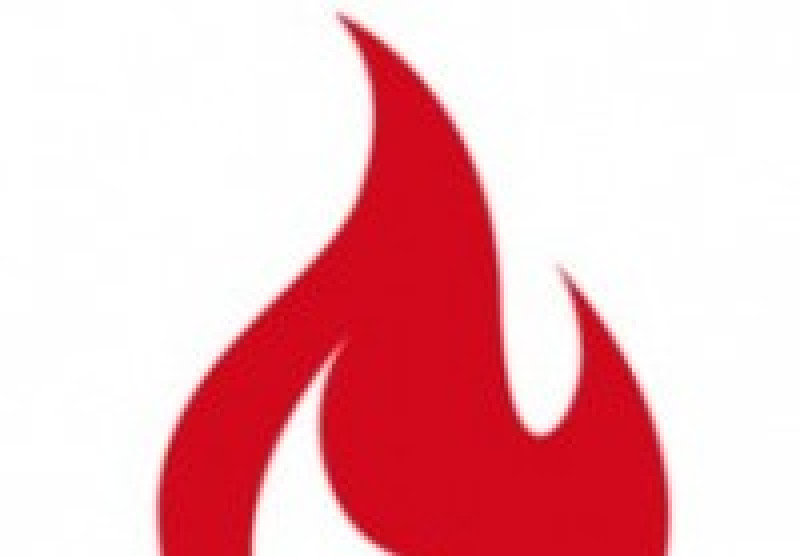
When dealing with burn patients, you want to find out as early as possible how the patient acquired the burn and what type of burn it is. For example, you might want to know if it was a flame burn that could possibly lead to airway obstruction due to inhalation of smoke or swelling of surrounding tissues. Or if it were a scald burn on a child in which you would consider the possibility of child abuse. Other types of burns include chemical burns, electrical burns, flash burns caused by explosions, and radiation burns. This information can usually be obtained from dispatch prior to your arrival.
Another aspect of burns that is necessary to identify is the depth of the burn. In pre-hospital care, burns are categorized by severity as superficial, partial-thickness, and full-thickness burns. Do not spend a lot of time determining the type of burn in the field. An approximation should be made for the hospital and so you know the proper treatment for the patient. Superficial burns involve only the epidermis or outer layer of the skin. The skin usually will turn red and will blanch when touched. These burns are painful because the nerve endings are exposed to the air. A common example is a sunburn. Partial-thickness burns involve the epidermis and the connective tissue below, known as the dermis. Partial-thickness burns differ from superficial burns in that they usually present with blisters or appear wet. These types of burns are usually a result of hot liquids or steam. Full-thickness burns involve both layers of the skin including the basement membrane of the dermis. With these burns, the skin appears waxy, brown and leathery or even charred. The sensory nerves are destroyed so there is usually no pain involved with this type of burn, but areas around the full-thickness burn may be painful.
Another important aspect to take into account during your assessment is how much of the patient's total body surface area (TBSA) is burned. The most common way of calculating this is by using the rule of nines. The rule of nines separates the body into regions of 9% of the body’s surface area. Knowing what percent each segment of the body is, add up the total area burned. For example, if an adult patient burns his or her entire chest/abdomen (18%) and left leg (18%), the patient's TBSA burned is 36%. The rule of nines changes based on the size of the patient's body. Another way of calculating TBSA burned is the rule of palms. This rule states that the palm of the patient's hand represents 1% TBSA. This rule works well for burns that are less than 10% of the body surface area or burns that are irregularly shaped.
Assessment
First and foremost, you want to make sure the scene is safe for you to make contact with the patient. Be especially aware of any potential hazards such as chemicals or downed power lines. Keep an eye out for placards that indicate hazardous materials or other safety concerns and contact the appropriate personnel if the scene does not seem safe.
After you have determined the scene is safe, the next action is to make contact with the patient and extinguish any remaining heat. If the patient's clothes are still burning or if they are wearing jewelry, it is vital to put out the flame and cool the jewelry to prevent any further burning. If possible, remove the patient's clothing and jewelry. If part of the clothing is burned to the patient's skin, do not pull it off. Instead, cut around the area and let the hospital staff remove it. If the patient's hands are burned and begin to swell up, remove any rings they may be wearing, as they will cut off circulation in their fingers. If you are dealing with a chemical burn, flush the affected area with copious amounts of water and remove any clothing that could be contaminated.
By now you should have formed a general impression and determined how severe the patient's burns are. As with any emergency call, airway is a priority. The airway can suffer the same heat or flame burn that occurred on the rest of the body, which could cause the airway to swell up and close. Signs to look for that might indicate potential airway compromise are coughing, hoarseness when speaking, burns around the mouth, singed nasal hairs or facial hair, and soot in the mouth. If you notice any of these signs, be prepared to manually ventilate the patient or RSI if permissible in your scope of practice. Listen to breath sounds and pay close attention to any wheezing or stridor that may indicate imminent airway compromise or failure. Administer high flow oxygen as soon as possible. Keep in mind that oxygen saturation readings on the pulse oximeter may be misleading if there was any CO inhalation. If you are an AEMT or Paramedic, you should establish an IV for pain management and fluid resuscitation to prevent the effects of burn shock. If possible, avoid starting an IV through burned tissue. However, do not delay transport by making multiple attempts at establishing a line.
Once you have covered your ABCs, you must determine the burn severity using the rule of nines as discussed earlier. This will allow you to determine your transport decision and what level of care your patient should receive, such as a burn center, trauma center or your local hospital. According to the American Burn Association, patients should be taken to a burn center if they meet any of the following criteria:
- Partial-thickness burn of more than 10% of the body surface area
- Burns that involve the face, hands, feet, genitalia, perineum, or major joints
- Full-thickness burns in any age group
- Electrical burns, including lighting
- Chemical burns
- Inhalation burns
Be sure to know where the burn centers are in your area and follow your burn protocols for transportation to one of these centers.
Once you have determined the severity of the burn and where you will be transporting the patient, you will need to do a secondary assessment and obtain a history. Look for any other injuries that may have occurred in addition to the patient getting burned that might require rapid treatment. Do a thorough head-to-toe exam, checking the eyes for injury or burn and apply moist sterile pads if necessary. Check the neck, chest, and extremities for circumferential burns because they have the potential to cut circulation to parts of the body. Check pulses often and try to get a set of vitals.
Next, you will begin management of the burns. Assess the burns for swelling, color, pain or absence of pain, blisters, capillary refill, bleeding and overall appearance. For superficial and partial thickness burns, cool the burns using water or wet sterile dressing and then cover with a dry sterile dressing. Do not use creams or ointments and do not rupture any blisters. Elevate burned area if possible to reduce edema. For full-thickness burns, complete a pain assessment and administer pain medications if it is in your scope. Wrap the burns in a dry sterile dressing.
Be sure to reassess the patient's vitals every 5 minutes if they are critical and every 15 for lower priority.
- Dozens of courses and topics
- State-specific requirements
- We report to CAPCE in real time


